International Code for Phytolith Nomenclature 2.0 (ICPN 2.0)
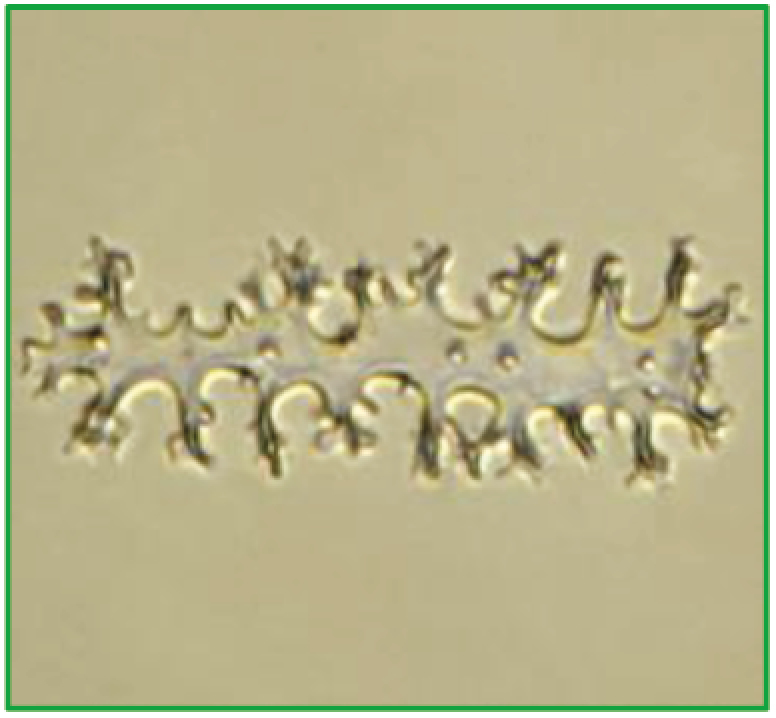
Annals of Botany 124: 189–200, 2019
doi: 10.1093/aob/mcz064
ICPN 2.0 formulates the principles for naming and describing phytoliths. Neumann et al. include revised and improved names, as well as detailed descriptions and diagnoses of nineteen of the most commonly recognized morphotypes. The article features a detailed and well-illustrated glossary of descriptive terms to assist researchers in describing and naming phytoliths. This revised, updated, expanded and improved code replaces ICPN 1.0 (Annals of Botany 96: 253–260), which has been the discipline standard for phytolith nomenclature since 2005. ICPN 2.0 is a critical reference resource for any researcher conducting phytolith analysis.
Authors: International Committee for Phytolith Taxonomy (ICPT): Katharina Neumann, Caroline A.E. Strömberg, Terry Ball, Rosa Maria Albert, Luc Vrydaghs, and Linda Scott Cummings
Membrane transporters – from sequence to phenotype (Invited Review)
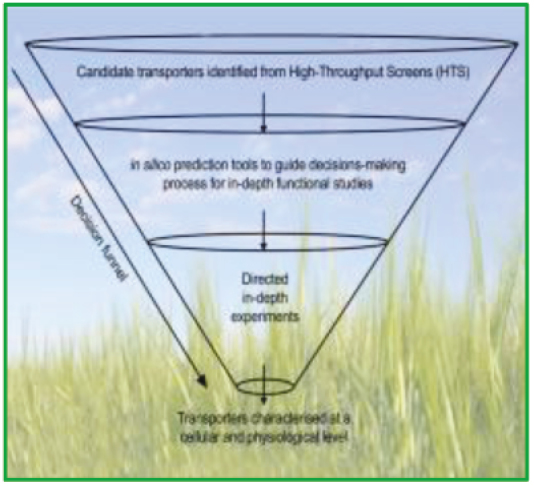
Annals of Botany 124: 201–208, 2019
doi: 10.1093/aob/mcz066
Large genomic or proteomic based data sets are becoming increasingly common in plant biology. David et al. review the common challenges and pitfalls researchers face in the interpretation of such large data sets – with a focus on the issues surrounding transporter proteins, and suggest guidelines for the decision steps involved in narrowing down transporter function. They propose strategies to overcome the multiple challenges through the creation of new databases that integrate data at multiple levels of complexity, from sequence to in-depth biochemical, structural and physiological studies that can eventually be used for novel hypothesis generation.
Authors: Rakesh David, Caitlin S. Byrt, Stephen D. Tyerman, Matthew Gilliham, and Stefanie Wege
Origin and genome evolution of Cardamine occulta
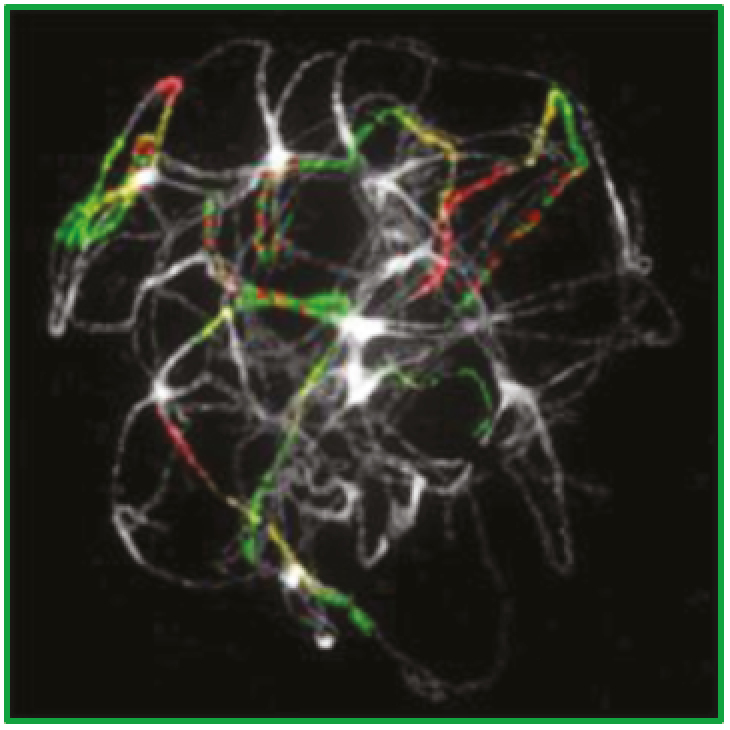
Annals of Botany 124: 209–220, 2019
doi: 10.1093/aob/mcz019
Cardamine occulta (Brassicaceae) is an octoploid weedy species (2n = 8x = 64) originating from Eastern Asia. It has been introduced to other continents including Europe and is considered to be an invasive species. Mandáková et al. reconstructed comparative genome structure, origin and evolutionary history in C. occulta and related species. For the first time, whole-genome cytogenomic maps were established for octoploid plants. In Post-polyploid evolution in Asian Cardamine, polyploids have not been associated with descending dysploidy and intergenomic rearrangements. The combination of different parental (sub)genomes adapted to distinct habitats provides an evolutionary advantage to newly formed polyploids that can occupy new ecological niches.
Authors: Terezie Mandáková, Judita Zozomová-Lihová, Hiroshi Kudoh, Yunpeng Zhao, Martin A. Lysak, and Karol Marhold
For a Commentary on this article see this issue, pp.vi–vii.
‘A rose is a rose is a rose’ —unless a different pollinator is looking
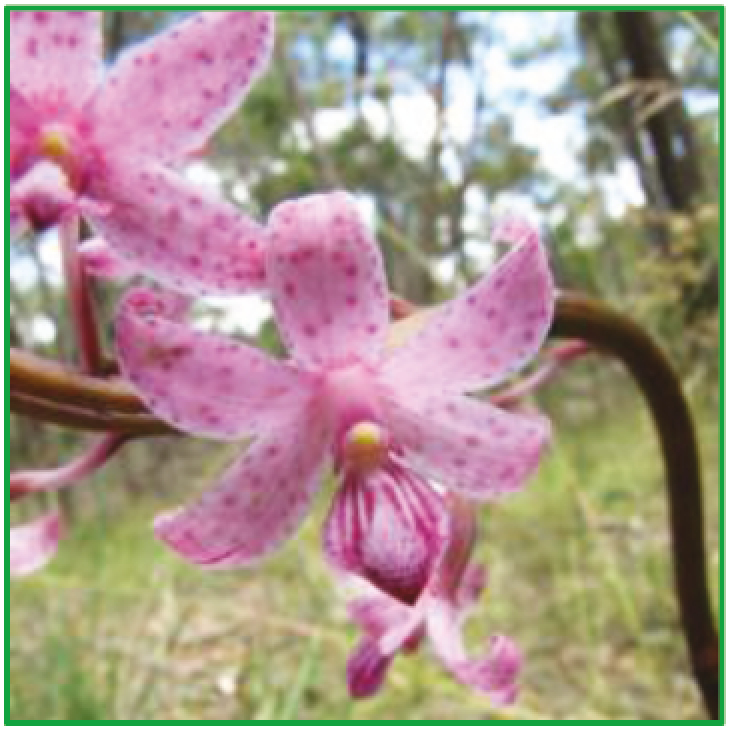
Annals of Botany 124: 221–232, 2019
doi: 10.1093/aob/mcz043
Does a flower’s colour affect when it blooms and what other species bloom with it? In principle, competition among co-flowering species to differentiate themselves in the eyes of pollinators could yield high colour diversity in a plant community, while joining forces with other species to reinforce a common advertising signal could produce an array of similar colours. Shrestha et al. find that in two Australian plant communities, the annual cycle of available flower colours is largely random, although different bee species would each perceive it somewhat differently due to their different visual capabilities. For plants, especially for ‘generalist’ species that might be pollinated by multiple insect species, the key to pollination may often lie in producing salient flower colours that can be easily detected in a visually ‘noisy’ world, rather than a colour that fits into a community colour pattern in a particular way.
Authors: Mani Shrestha, Adrian G. Dyer, Jair E. Garcia, and Martin Burd
For a Commentary on this article see this issue, pp.viii–ix.
Compensatory base changes on an ITS2 phylogeny of Corydalis
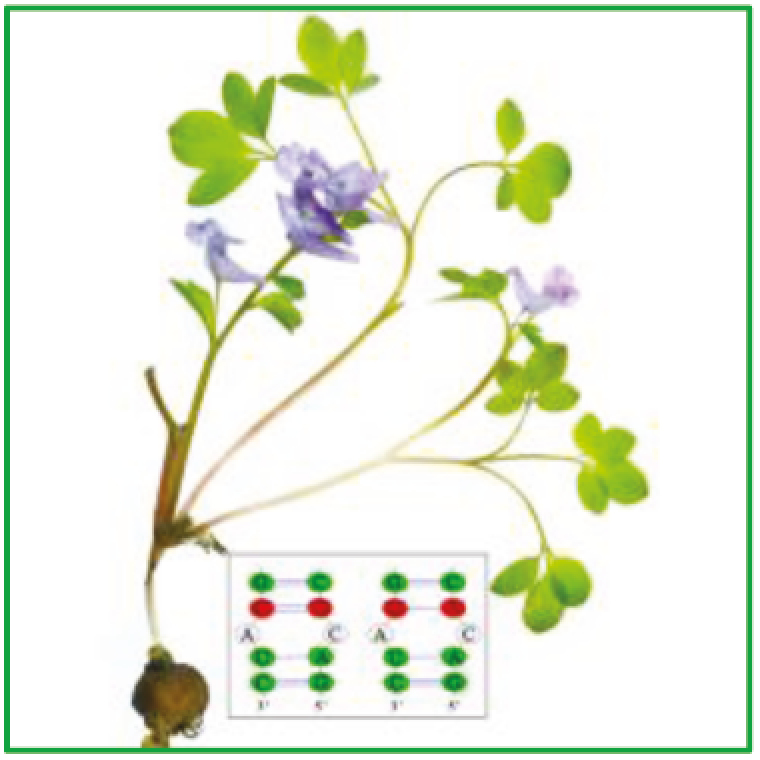
Annals of Botany 124: 233–244, 2019
doi: 10.1093/aob/mcz062
Compensatory base changes (CBCs) that occur in stems of ribosomal internal transcribed spacer 2 (ITS2) can have important phylogenetic implications. Li et al. quantify how CBCs affect selection of substitution models and values for species delimitation in a more recent Corydalis lineage by using both DNA- and RNA-specific models. They demonstrate that application of conventional DNA models is unlikely to be problematic when conducting phylogenetic analyses of ITS2 within such closely related lineages, wherein few CBCs are observed. Neither of the CBCs occurred within any given species, which is consistent with application of the CBC species concept.
Authors: Meihui Li, Hong Zhao, Fengxi Zhao, Lu Jiang, Huasheng Peng, Wei Zhang, and Mark P. Simmons
Rhythms written in wood of tropical trees

Annals of Botany 124: 245–254, 2019
doi: 10.1093/aob/mcz069
Tropical forests are experiencing unprecedented climatic conditions and therefore we need to predict their fate. Wood reveals a tree’s past, but we know little of the seasonal rhythms of wood growth in the tropics. De Mil et al. show that limba trees, Terminalia superba (Combretaceae) of the Congo Basin burst their buds at different times (up to 45 days apart), causing the wood properties between these trees to get ‘out of tune’. High-resolution measurements of growth, linking leaf and cambial phenology, with stable isotope analysis allows growth asynchrony and correlations with weather variables to be made. The results elucidate tree responses archived in wood, which is a key component in forest resilience against future climate change.
Authors: Tom De Mil, Wannes Hubau, Bhély Angoboy Ilondea, Mirvia Angela Rocha Vargas, Pascal Boeckx, Kathy Steppe, Joris Van Acker, Hans Beeckman, and Jan Van den Bulcke
Role of ploidy in Arabidopsis arenosa colonization of alpine habitats
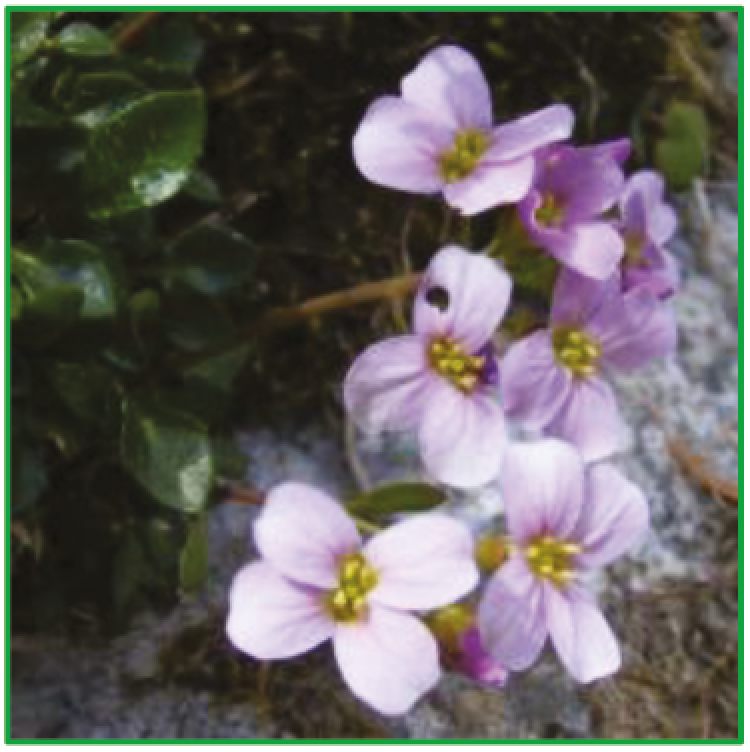
Annals of Botany 124: 255–268, 2019
doi: 10.1093/aob/mcz070
The consequences of genome duplication in phenotypic and environmental differentiation is studied in Arabidopsis arenosa along an elevational gradient. Wos et al. sampled and genotyped diploid and tetraploid populations at different elevations and recorded local biotic and abiotic conditions. They showed minor effects of polyploidy on colonization of alpine stands and low genetic differentiation indicating recent divergence between the two cytotypes. In addition, diploid and tetraploid populations occupied similar ecological niches and had similar phenotype at a given elevation. Colonization of alpine habitats in this species was mainly driven by past neutral demographic and/or selective processes rather than by genome duplication.
Authors: Guillaume Wos, Jana Mořkovská, Magdalena Bohutínská, Gabriela Šrámková, Aadam Knotek, Magdalena Lučanová, Stanislav Španiel, Karol Marhold, and Filip Kolář
Nectar traits differ between pollination syndromes in Balsaminaceae
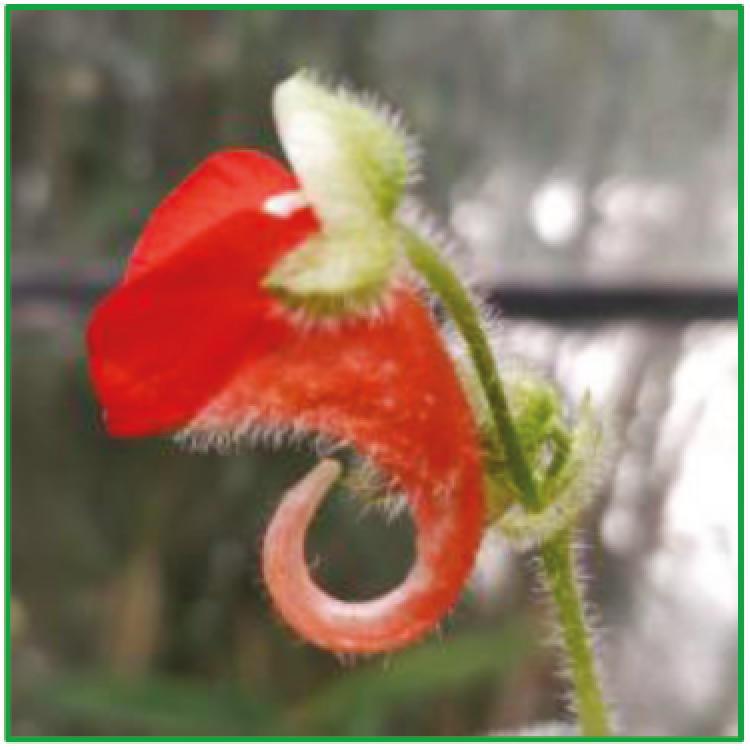
Annals of Botany 124: 269–280, 2019
doi: 10.1093/aob/mcz072
The exceptionally diverse flower architectures and coloration patterns in Balsaminaceae are considered adaptations to attract different sorts of pollinators. Vandelook et al. test whether nectar quantity and composition are also adapted to different types of pollinators and if so, whether there are combinations of nectar traits typical for certain pollinators. Comparison of a series of evolutionary models show that nectar volume and the proportion of sucrose in nectar among other traits indeed evolved towards specific values related to different types of pollinators. In addition, their results indicate that combinations of nectar traits help to predict the main type of pollinator.
Authors: F. Vandelook, S.B. Janssens, P. Gijbels, E. Fischer, W. Van den Ende, O. Honnay, and S. Abrahamczyk
Evolutionary origin of petals in Caryophyllaceae
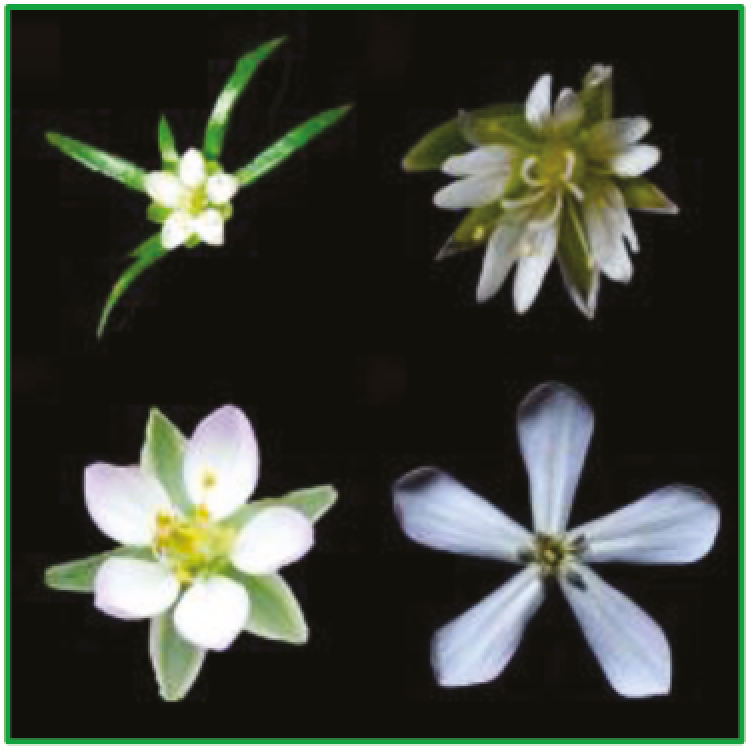
Annals of Botany 124: 281–296, 2019
doi: 10.1093/aob/mcz075
Caryophyllaceae possess petal-like structures (petaloids) with a great diversity in shape. Mainstream views consider ancestors of Caryophyllaceae as apetalous and interpret petaloids as centrifugally derived staminodial appendages. Wei et al. performed a floral development study of five selected species to determine the homology of the petaloids. Petaloids develop before and independently of the stamens, by fractionation of common stamen-petal primordia, or are absent. Their study rejects a staminodial origin and suggests equivalence with normal second-whorl petals. Heterochrony causes a delay in petal development, leading to an amalgamation with stamens, in line with the tendency in the core Caryophyllales for petal loss and perianth reorganisation.
Authors: Lai Wei, and Louis Ronse De Craene
Cross-ring xylem connections in woody plants
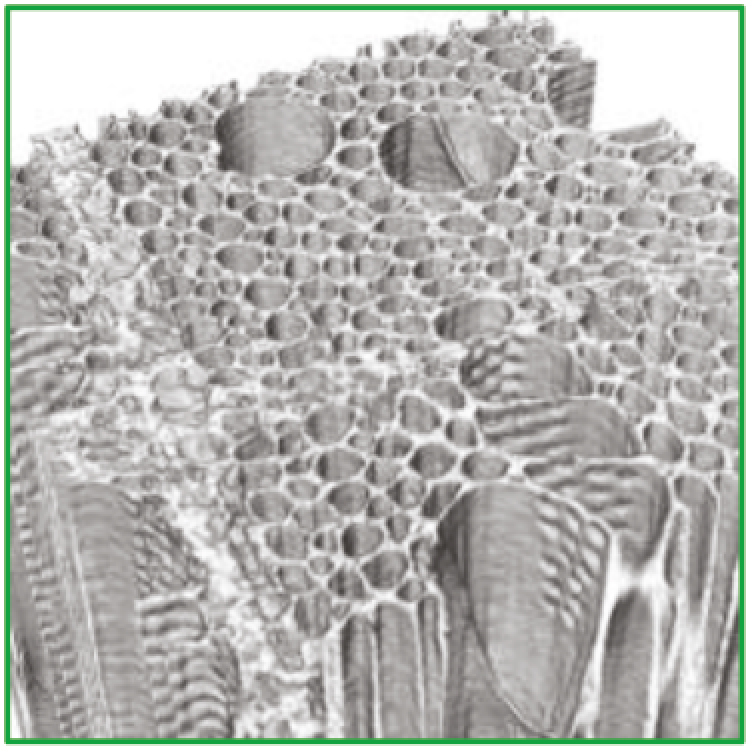
Annals of Botany 124: 297–306, 2019
doi: 10.1093/aob/mcz076
Xylem vessel connections across growth rings allow woody plants to expand their functional xylem networks into previous growth rings. These multi-year xylem networks can be more efficient uses of carbon but also expose current year xylem to residual air embolisms in previous rings. Wason et al. used dye staining, X-ray computed microtomography, and hydraulic measurements to identify species that have the capacity for efficient cross-ring xylem sap flow and the impacts on plant hydraulics and drought resistance.
Authors: Jay W. Wason, Craig R. Brodersen, and Brett A. Huggett
Adaptation and plasticity in an invasive tree
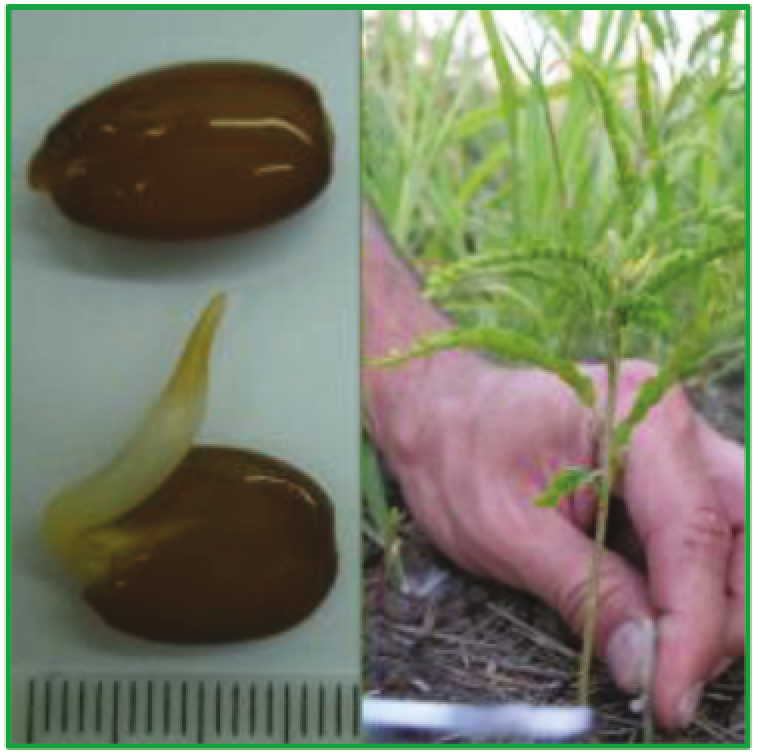
Annals of Botany 124: 307–318, 2019
doi: 10.1093/aob/mcz077
Gleditsia triacanthos (Fabaceae) can invade different biomes, as subtropical forest, dry woodland or temperate grassland, but little is known about local adaptation and plastic responses of this invasive tree. In a thorough study including chamber and field experiments, Tognetti et al. show that seed germination was differentially affected by water availability and light environment depending on seeds origin, while in a common garden the removal of resident vegetation reduced seedling survival and enhanced seedling growth independently of origin. Thus, local adaptation in seed germination traits and plastic changes in seedling allometry (e.g. height:diameter) can explain different aspects of tree invasion capacity across biomes.
Authors: Pedro M. Tognetti, Noemí Mazia, and Gonzalo Ibáñez
Two reciprocal translocations in the burmannica group of M. acuminata
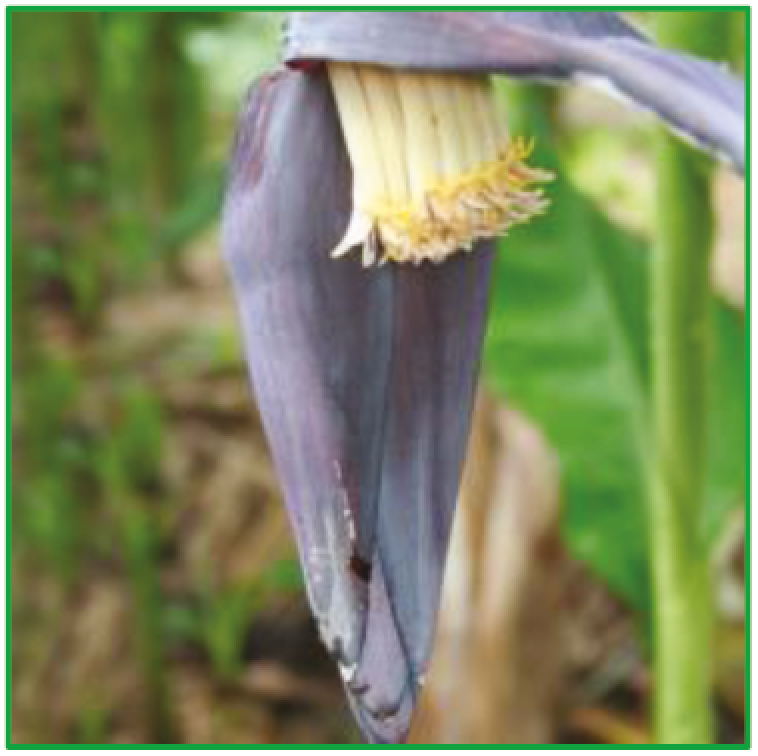
Annals of Botany 124: 319–330, 2019
doi: 10.1093/aob/mcz078
Banana cultivars are generally triploid and are derived from hybridization between Musa (Musaceae) species or subspecies. Dupouy et al. characterize two large chromosomal reciprocal translocations in the disease resistant-rich wild M. acuminata ssp. burmannicoides ‘Calcutta4’ accession as compare to the reference genome of M. acuminata ssp. malaccensis ‘DH-Pahang’. One involved distal regions of chromosome 2 and 8. The other involved distal regions of chromosome 1 and 9. Both translocations were found only in wild accessions belonging to the burmannica genetic group and thus likely originated from this group. This information should help breeders to exploit this disease resistant rich genetic group.
Authors: Marion Dupouy, Franc-Christophe Baurens, Paco Derouault, Catherine Hervouet, Céline Cardi, Corinne Cruaud, Benjamin Istace, Karine Labadie, Chantal Guiougou, Lyonel Toubi, Frederic Salmon, Pierre Mournet, Mathieu Rouard, Nabila Yahiaoui, Arnaud Lemainque, Guillaume Martin, and Angélique D’Hont
Symbiont specialization in Thismia
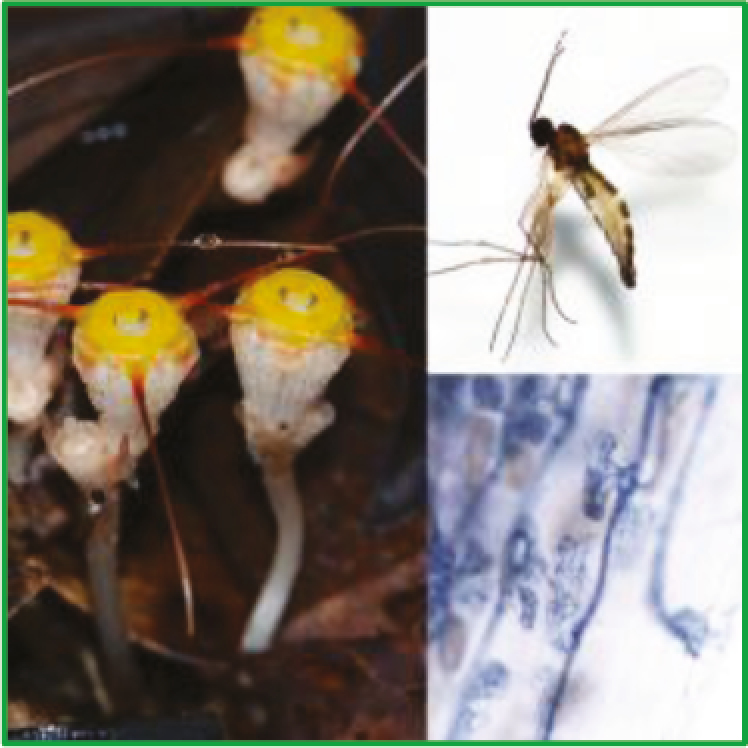
Annals of Botany 124: 331–342, 2019
doi: 10.1093/aob/mcz087
Mycoheterotrophs, which obtain carbon by cheating their mycorrhizal fungi, often self-fertilise due to the evolutionary instability inherent in maintaining multiple symbioses. Some mycoheterotrophs have structurally complex flowers indicative of xenogamy. Guo et al. examine the mycorrhizal communities and pollination mechanism of Thismia tentaculata (Thismiaceae) to test possible double-specialisation in above- and below-ground symbioses. T. tentaculata maintains a symbiotic association with a single arbuscular mycorrhizal Rhizophagus species. The flowers are predominantly xenogamous and pollinated by a single fungus-gnat species (Corynoptera, Sciaridae). The maintenance of this dual specialisation is possible due to the wide distributions of the fungal and fungus gnat symbionts.
Authors: Xing Guo, Zhongtao Zhao, Shek Shing Mar, Dianxiang Zhang, and Richard M. K. Saunders


